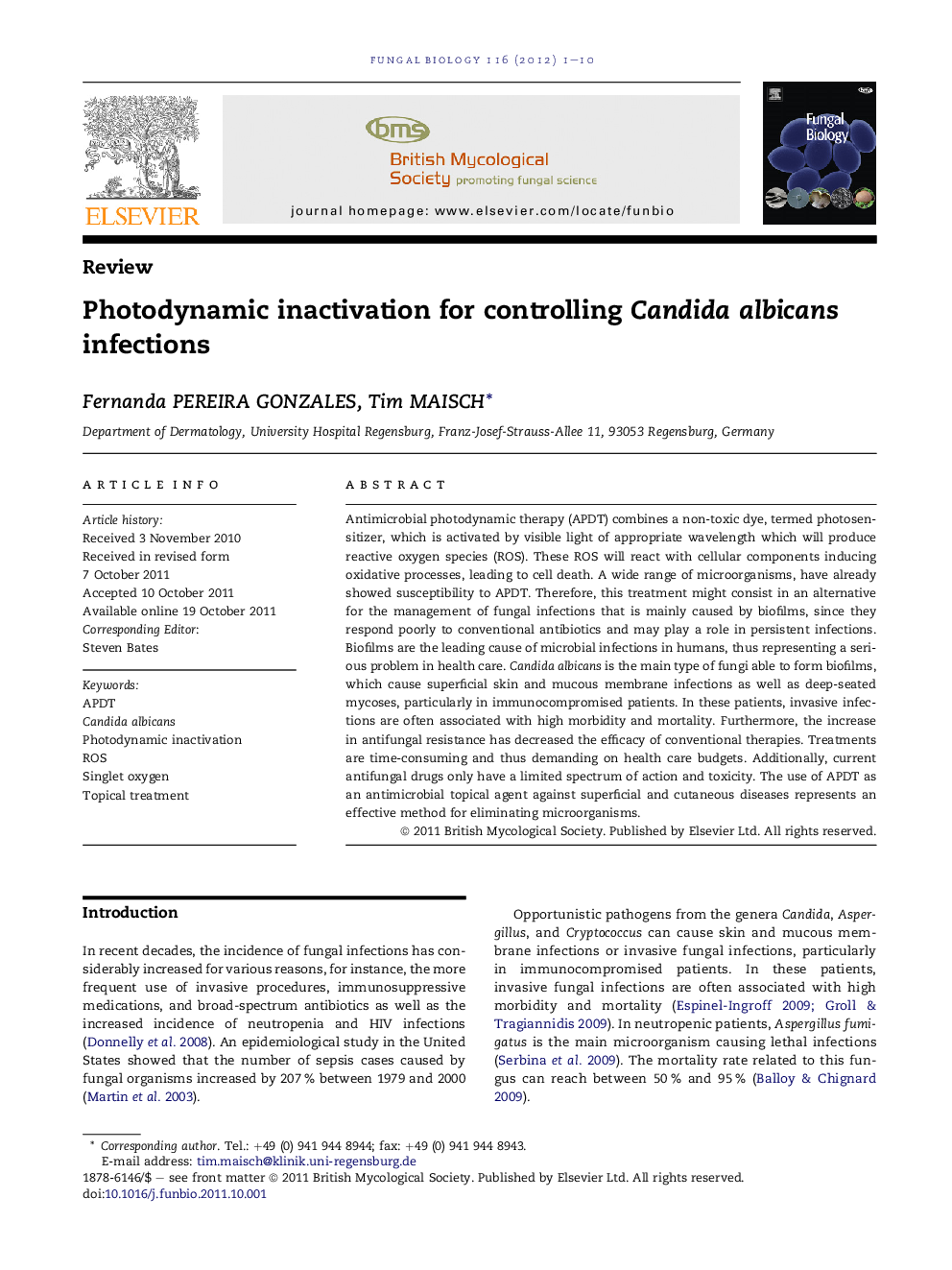| کد مقاله | کد نشریه | سال انتشار | مقاله انگلیسی | نسخه تمام متن |
|---|---|---|---|---|
| 6287957 | 1300046 | 2012 | 10 صفحه PDF | دانلود رایگان |
عنوان انگلیسی مقاله ISI
Photodynamic inactivation for controlling Candida albicans infections
دانلود مقاله + سفارش ترجمه
دانلود مقاله ISI انگلیسی
رایگان برای ایرانیان
کلمات کلیدی
موضوعات مرتبط
علوم زیستی و بیوفناوری
علوم کشاورزی و بیولوژیک
علوم کشاورزی و بیولوژیک (عمومی)
پیش نمایش صفحه اول مقاله

چکیده انگلیسی
Antimicrobial photodynamic therapy (APDT) combines a non-toxic dye, termed photosensitizer, which is activated by visible light of appropriate wavelength which will produce reactive oxygen species (ROS). These ROS will react with cellular components inducing oxidative processes, leading to cell death. A wide range of microorganisms, have already showed susceptibility to APDT. Therefore, this treatment might consist in an alternative for the management of fungal infections that is mainly caused by biofilms, since they respond poorly to conventional antibiotics and may play a role in persistent infections. Biofilms are the leading cause of microbial infections in humans, thus representing a serious problem in health care. Candida albicans is the main type of fungi able to form biofilms, which cause superficial skin and mucous membrane infections as well as deep-seated mycoses, particularly in immunocompromised patients. In these patients, invasive infections are often associated with high morbidity and mortality. Furthermore, the increase in antifungal resistance has decreased the efficacy of conventional therapies. Treatments are time-consuming and thus demanding on health care budgets. Additionally, current antifungal drugs only have a limited spectrum of action and toxicity. The use of APDT as an antimicrobial topical agent against superficial and cutaneous diseases represents an effective method for eliminating microorganisms.
ناشر
Database: Elsevier - ScienceDirect (ساینس دایرکت)
Journal: Fungal Biology - Volume 116, Issue 1, January 2012, Pages 1-10
Journal: Fungal Biology - Volume 116, Issue 1, January 2012, Pages 1-10
نویسندگان
Fernanda Pereira Gonzales, Tim Maisch,